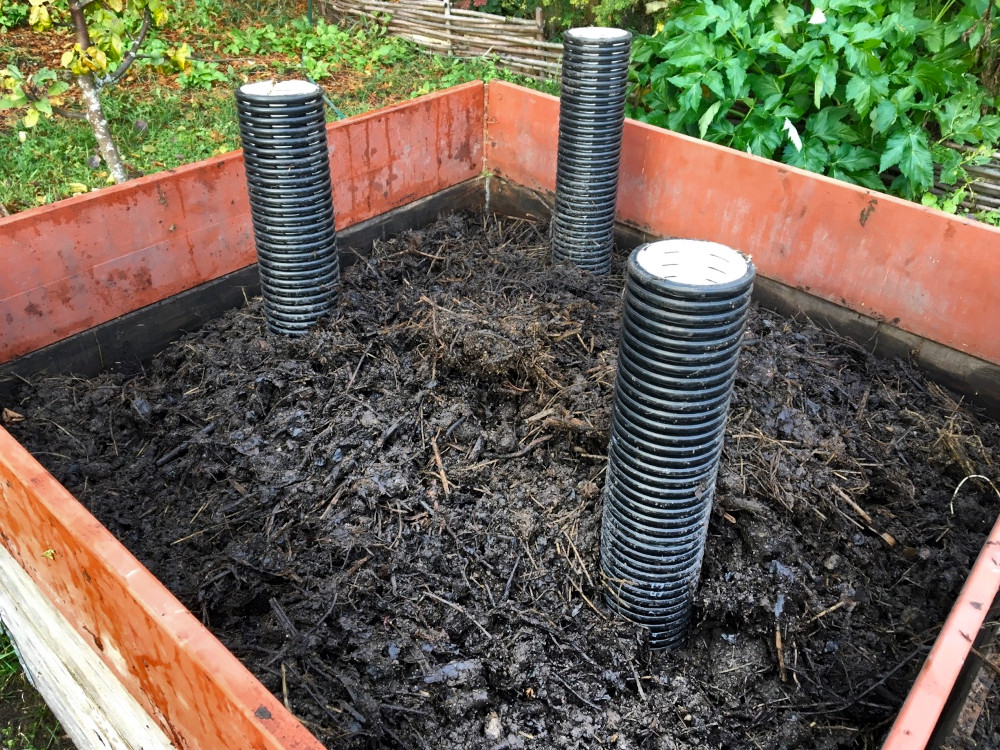2022 at Tallbacka
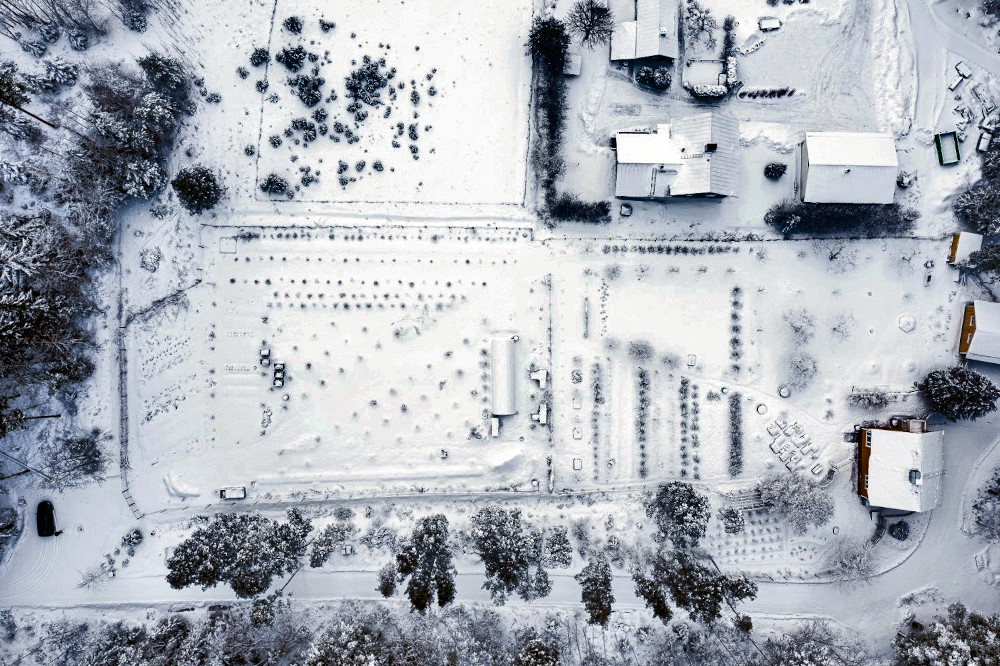
We started the year with an analysis of the situation and a new plan. The texts for the home page and the list of plants were updated in January. We also made a new presentation folder to inform our customers about our new salad mix, Tallbacka Mix and what it contains. At the end of January we succumbed to the corona virus, luckily a milder strain. At the beginning of February the new books we had ordered arrived by post, Charles Dowding’s Skills and Stephen Barstow’s Around The World in 80 Plants. Both books were a great reading experience and have left ‘tracks’ in the garden. The precision cultivation method of Dowding’s and Barstow’s incredibly species rich list of eatable plants (lettuce/salad) gave our own product a fantastic base and is something new and unique in Finland.
We made no new growing map for 2022, but we wanted to build some new NO DIG beds and knew that we needed to cut down some old apple trees that were in bad shape. We carefully started to sow and raise our plants. On the first day of February we sowed chilli and at the beginning of March we moved the lettuces to the greenhouse. The spring was very cold, long and icy and in the middle of March we had a thick layer of ice everywhere with frozen ground underneath. The greenhouse was surrounded by snow-melt and the start of the growing season was definitely late.
The beginning of March saw us collecting brushwood and branches to turn them into chippings so we could build our first Berkeley Hot Compost. Our attempts with composts from the year before were not enough for our needs and the long, drawn out spring showed us the churlishness of the soil: the composts were frozen solid. The NO DIG method of cultivation needed large amounts of compost and quickly! The Berkeley method of composting, from the University of Berkeley, promised a finished compost within a month sounded like such a crazy idea that we just had to try it. We collected horse manure as a “green” material and a “brown” material consisting of wood-chippings and garden refuse and placed them in layers in 1.2 x 1.2 metre pallet collars. After the fifth day they should be turned with a fork bringing the inner material to the edges and vice-versa.
Thanks to the pallet collars the work was not as strenuous as anticipated and the method worked better than we had ever hoped! We soon had four composts, then six…
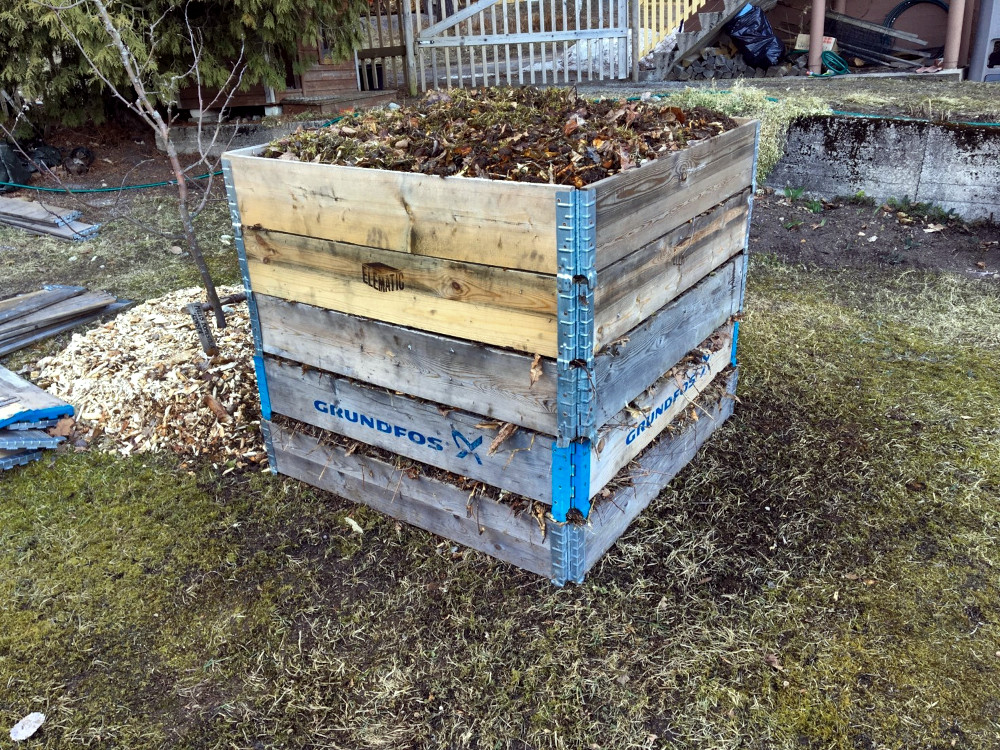
The soil we needed for plant propagation was another problem for 2022. We had no compost of our own for this yet and we were forced to buy the soil. Perhaps it was just bad luck but some of the sowing didn’t germinate at all, while some that germinated even died. This happened to our beetroot and Swiss chard plants. With the coming season of 2023 we are better equipped; we started a compost in the greenhouse in the autumn with the thought of making soil. We hoped to save some money on soil and considering its apparent varying quality is relatively expensive. We also heard bad news from Sweden who had warned of traces of pyralids in soils and manures. It has been very quiet about these substances in Finland. The ice and snow had almost melted towards the end of April but the ground was still frozen. At the beginning of May a group of students from Tuorla came to acquaint themselves with our cultivation methods so we were able to get the work moving. We measured out the new beds for herbs, rhubarb and flowers in the apple garden.
The study group then built the NO DIG beds by covering the ground with cardboard and newspaper, hose manure and soil.. The final result was surprisingly good despite the cold spring. The beds needed to be watered well a few times during the summer months but as the plants rooted themselves well in the soil and the weeds under the cardboard died as a result of lack of light, the plants developed quickly in the undisturbed, microbe rich soil structure. The sage and rhubarb grew really well and we planted some new blackcurrant bushes Rovada and Viksnes and cherry plums Pietarin Lahja, Inese and Sapalta in the beds. This next spring we’ll see how they get through their first winter.
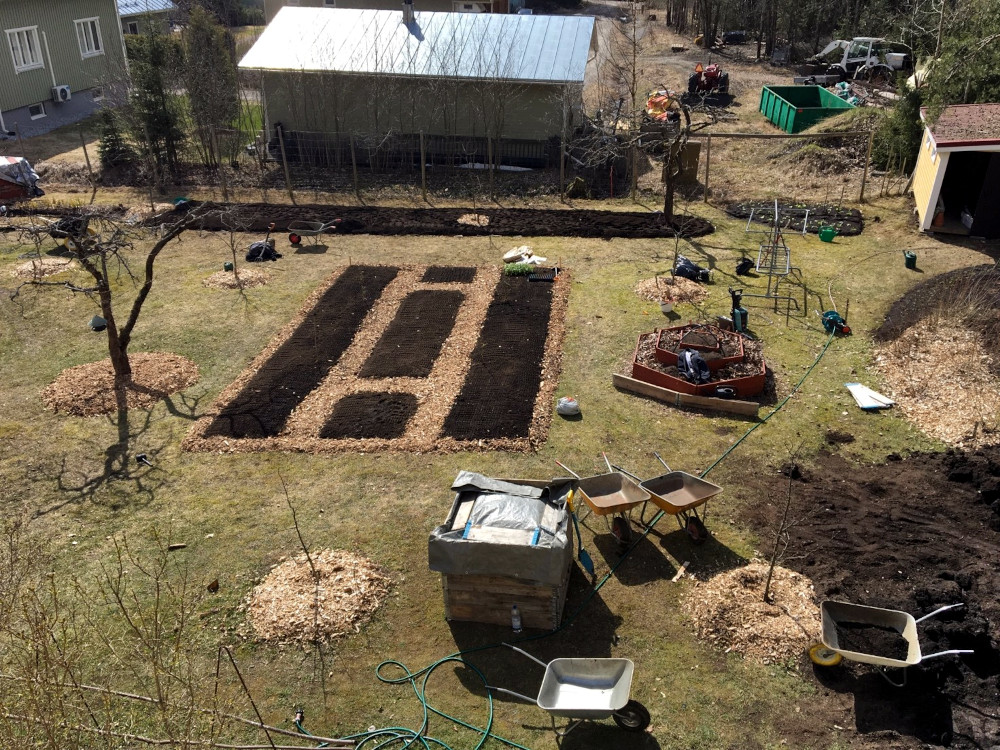
In April we harvested our first lettuce and the outdoor season started May 3rd when we sowed radishes and onions. In other words it wasn’t early but the spring was cold. The radishes grew well under the fleece, but they didn’t do well enough in the conditions to be able to harvest them and replant lettuces. We were expecting our top harvest to begin around midsummer. We managed to get some salad for the midsummer celebrations but the top harvest started at the beginning of July.
The way Dowding grows salads is ingenious: he sows in boxes outside, plants the small plants on separately in their own plugs and lets them grow in the greenhouse and if necessary covers them with fleece to spare them from the cold. This saves unnecessary work and also space which is especially important for us. A couple of times a week we harvest one plant at a time by taking the outermost leaves from the stem. This allows the undisturbed growing tip to quickly produce new, perfect leaves. We are dreaming of a winter greenhouse for growing lettuces, but we haven’t got that yet. Still, the first phases of the work ought to go smoothly. We need to plan things well in advance, the varieties we sow, the growing lights, sheet pots and planting on in beds that have a couple of inches of compost. And of course we need a whole lot of luck. We try to learn from our mistakes and then try again.
Growth in June was enormous and everything looked great under the early summer light. In July we had a lot of lettuce. Tallbacka Mix is constantly challenging us, teaching us and gives us a lot of happiness. Under the summer light the lettuces look as beautiful as jewels.
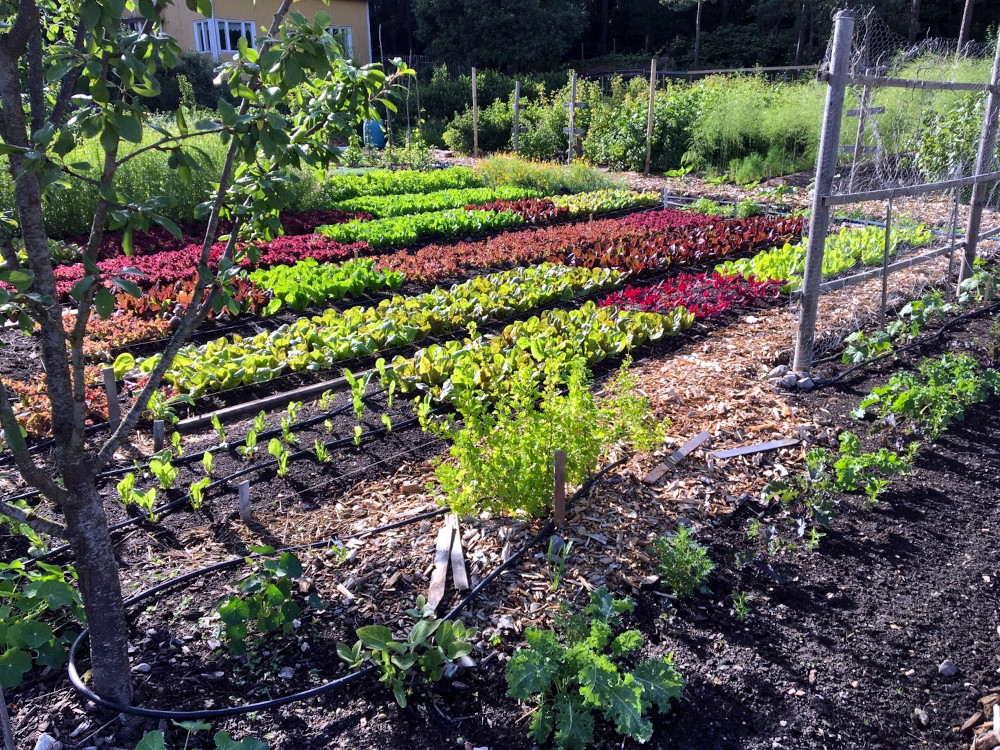
Everything looked promising on June 5th when we celebrated the garden opening for Whitsun. We talked a lot about the preceding five years, new ideas, the NO DIG method, the composts, the extra plants that were for sale as well as Tallbacka honey (Titti Edfelt), Erik Saanila’s pictures and posters, Robert’s Bröd’s rolls and the house band, The Fifth Jazz Edition performed. A great day!
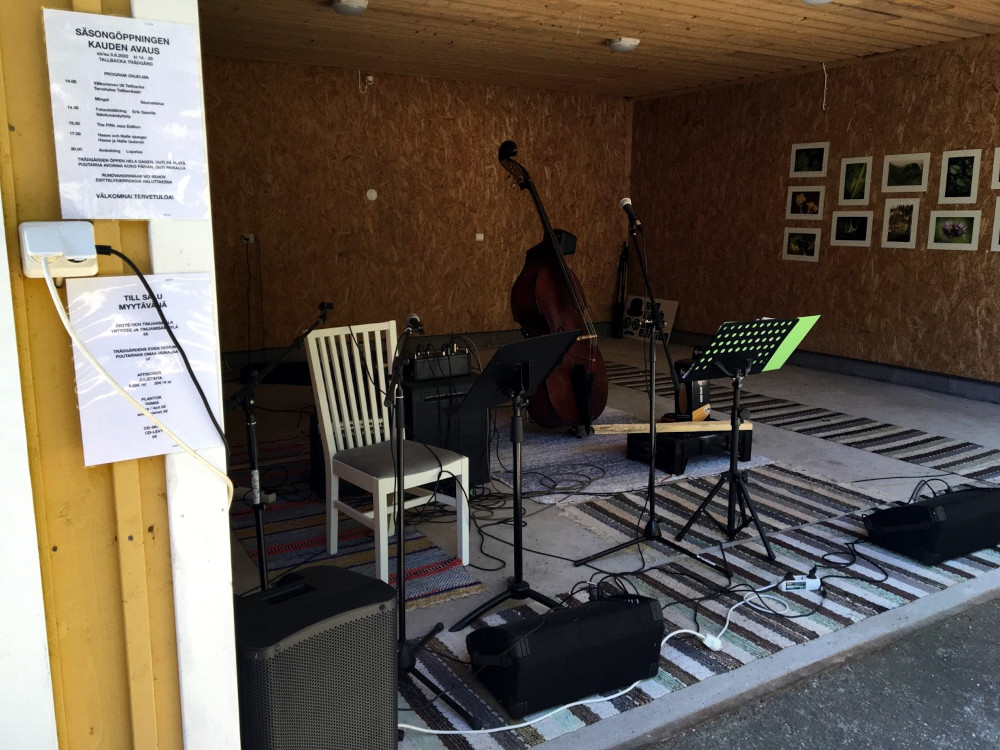
Many things can be made to fit into the season. Some things turn out well, others not. We got more automatic ventilators for the greenhouse and after the last years scalding weather we bought a net for shading. The tomatoes and aubergines grew well in the greenhouse but the aubergines didn’t want to fruit. We were forced to accept it. 2022 was the year of the tomato. This year we will radically decrease the amount of tomatoes and chilli and grow rocket and Chines mustard in the greenhouse. Unfortunately the bugs are stronger than us outdoors where a tightly woven protecting cloth or a late sowing don’t seem to help.
The soil quality has improved and is already showing what it can do, but cultivation mistakes and the droughts of previous summers has affected the perennials and it shows. The berry bushes have begun to get better but the gooseberry moths are still with us (not so common in UK). We have not wanted to sell the berries until we can get the moth under control as much as possible. Spring 2023 we will start pruning the bushes so as to increase available compost material as much as possible. We believe in our lovely berries and we wouldn’t manage throughout the long, dark winters without our berry breakfasts. Our list of rare berry plants has become longer and new for the autumn were the Cornelian cherries Olena and Dublany, mahonia, medlar Nottingham, mulberry and juneberry Härkätien Herkku. We will be selling them in time and not just using them ourselves.
Delivering to our customers can take a long time. Harvest and preparation for sale will take most of our time on a Sunday and Monday. During the short summer season extra deliveries before the weekends are needed as well; the archipelago can be filled with many events so work in the garden is always threatened and that’s why we believe in the NO DIG method. We can leave time consuming tasks like weeding, digging over beds and fertilizing., providing we have done the ground work properly, of course. Ideally, we would have had time to spread a layer of compost on all the beds late in the autumn and also spread wood-chippings between the beds. In effect, the NO DIG beds are ready for sowing or planting the day after harvesting and a light raking of the surface. Watering is made easy because the soil, being undisturbed, where the microbial and fungal (the hypha) structure is still intact, keeps a hold on the water and uses it effectively. It is, however, important to pay attention to the edges of beds during the summer. Greedy grasses wants to spread into the beds and slugs and snails love the damp and protected edges where they spend the day waiting for the nightly food orgies. Well looked after edges and paths are also important for the look of the garden. We want people to visit our garden all through the season so we like to keep the edges well looked after. The challenge for us is to use the little time and energy we have in the right way. How can we divide them between cultivation, customer deliveries and garden aesthetics and still manage to realise the whole.
Last year we didn’t have enough compost to cover the new beds and the areas under bushes. As well as the Berkeley composts, we built a permanent, roofed, 3 x 1.5 metre three-sectioned compost from Charles Dowding’s example. It works by filling one section at a time and continuing until it reaches 1.7 metres in height and no longer sinks down. It’s interesting to follow how the heat develops and every time you add new material and it reaches 55 – 60°C you can be happy. It’s important to check the dampness now and then and water when necessary.
The first section can be left to its own devices for a few months, during which the third section is filled. The middle section works as a store for the “brown” material with a high carbon content and later the first section is turned into it. Dowding’s compost is turned only once and after two or three months it’s ready to use.
We can collect as much “green” material as we like from the garden, which contains nitrogen, but it’s more difficult to find material with carbon content. It’s the other way round in the spring. We were already preparing for the next summer in the autumn by having a lorry load of autumn leaves delivered from the graveyard in Åbo. Many helpful gardeners have also provided us with leaves and garden waste. We are always on the look out for suitable material and others waste is a gold mine for our composts. We need about 10 m³ of compost every year to keep the NO DIG beds going. In the beginning we probably need more and that is definitely a challenge. However, making compost is inspiring! It is so overwhelming and addictive that other garden duties suffer.
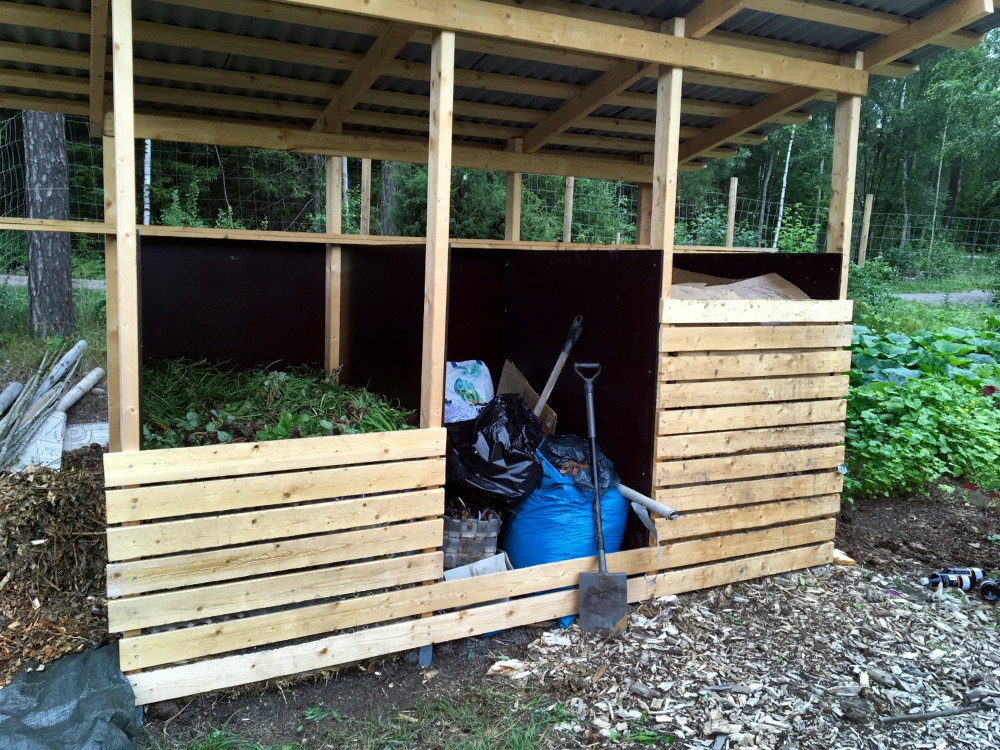
As the Corona pandemic started to subside during 2022 we started to open the garden for visits. This has been our aim for the last two years. We have also participated twice in the Open Gardens scheme and in 2022 this was on August 7th. The day took quite an effort but we also learnt a lot and it was a necessary achievement for us. We had five hours of continuous garden guiding, quite a job. On July 31st we had an Onions and Lyrics evening with onions and other delicacies in the garden with a program of lyrics and also tasty food supplied by Eva Matmalmen.
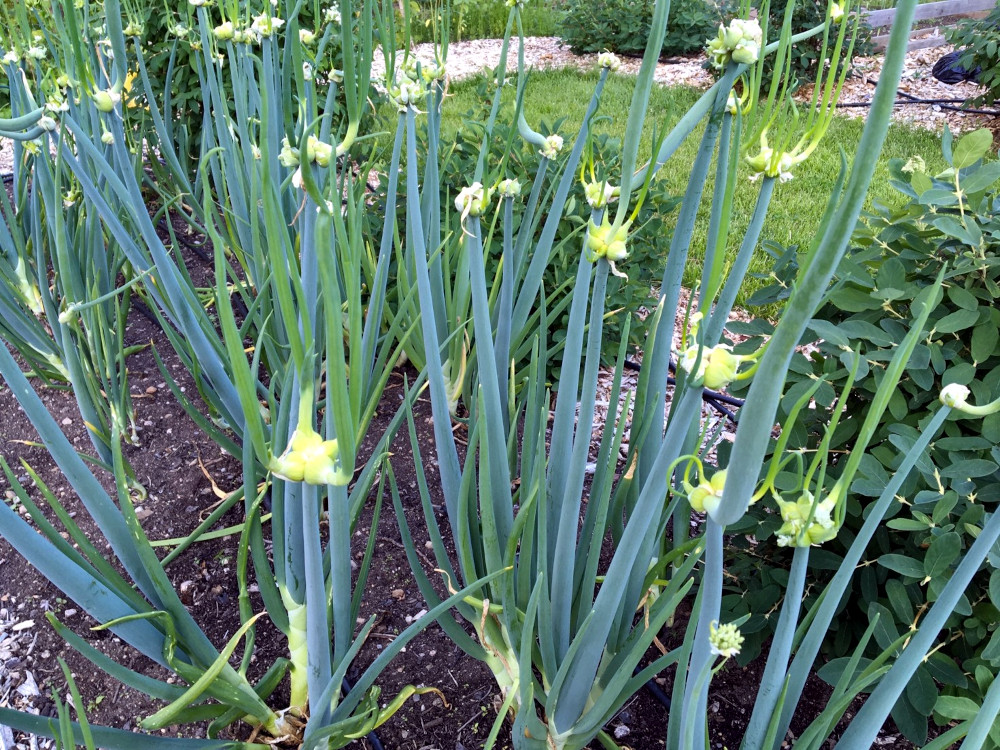
Other groups have visited us during the growing season. It has been inspirational to present and guide in the garden but also quite exacting. Even though we can talk about the garden “until the cows come home” we must be careful to present it clearly and interestingly. This is the direction we need to develop it in. So next season we would like to welcome all who are interested in gardening, soil, vegetables and the NO DIG method. Tallbacka is open the whole summer and we can cater for groups at short notice. (We need some time to prepare the food)
In September we participated in a new activity. Kimmo Englund from Vantaa (near. Helsinki) knows a lot about the life of microbes in soil and soil structure. We were lucky to be the first to host a course on soil with Kimmo lecturing and giving us practical advice and introducing us to the wonderful life of soil. We received new knowledge and were eager to try out methods of cultivation that and are both useful for, and benefit, the soil’s microbes. It would be good if we could have more similar courses; this is an important subject and has, unfortunately, been lost in modern agriculture.
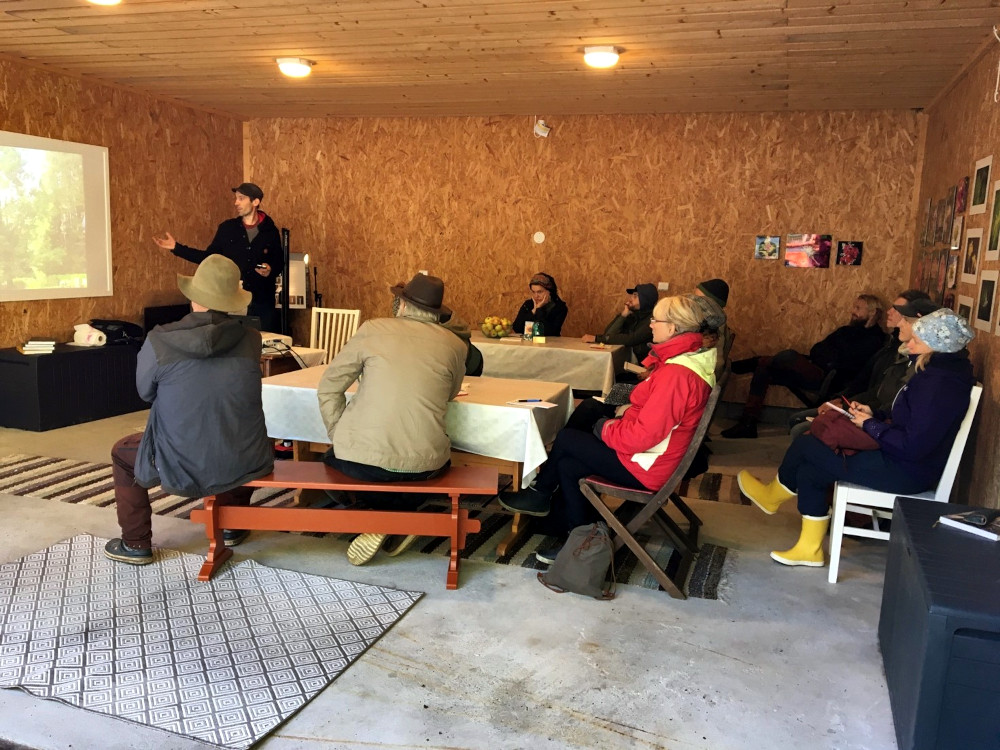
We were invited in October 2022 to lecture on NO DIG and how we have applied it to our situation in Finland and Pargas. Outi went to the Livia trade school and Nalle went to one of Aura trädgårdvänner’s monthly meetings in Åbo. All in all, it was a positive experience because while the lecture was being planned it made us think clearly about the subject and hopefully lead us to new insights. It’s also good to meet new people who are interested in permaculture and growing things as nature intended.
Our strength began to run out during the autumn. There was just too much to do and the daylight was getting shorter, the mornings colder. It became immediately colder when the sun went behind the clouds. We made compost as long as it was possible. We extended our long project, a wooded area between the road and garden. The ditch has been fitted with drainage pipes and filled in with gravel and other garden waste. Grass and other growth is covered with cardboard. We received a damaged bale of hay which provided many square metres of cover. We then covered this with horse manure and finally lots of leaves. We are thinking of planting small fruit trees and perennial herbs. The Cornelian cherries are already planted on this warm bank.
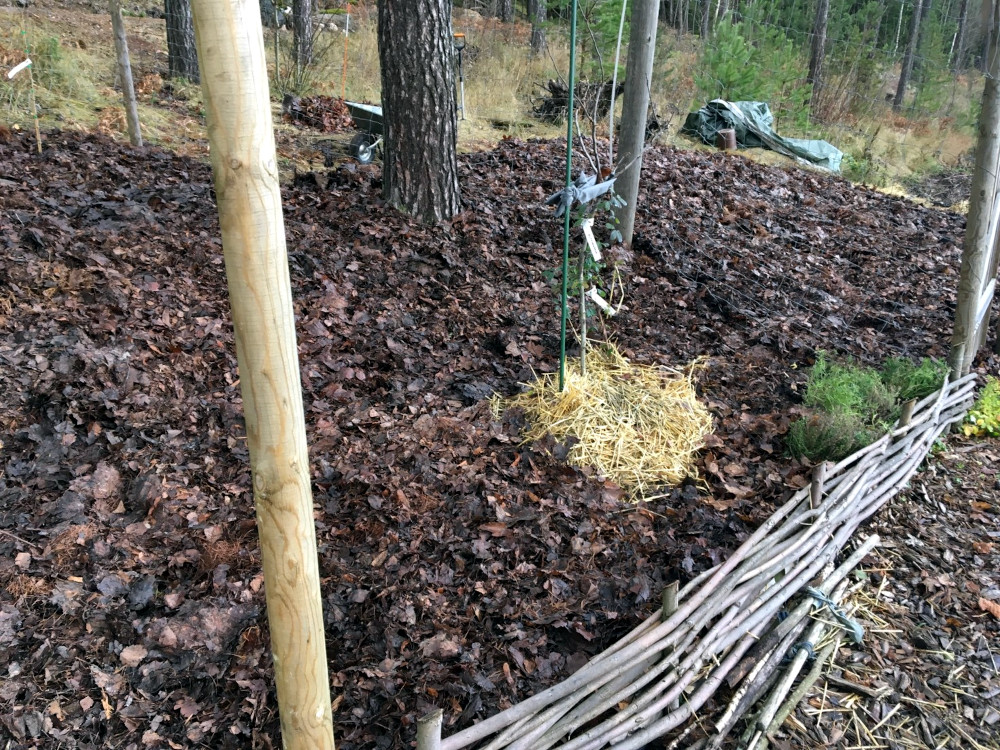
We have now gained access to a small plot (ca 600 m²) adjoining our plot by the main road. We are dreaming of a small pond with frogs and toads and suitable perennials like Iris. Only the future will tell how it will shape up.
This next year will bring new things and shapes. Tallbacka Mix will be our main product and it will be full of new things, very beautiful and taste wonderful. We will still develop the garden, the bushes will grow and the truffle grove is starting to take shape. The berries will produce well. You can sit by the herb beds and enjoy the beauty of their flowers and the buzzing insects or be assured of the wonder of life growing and being supported with the compost.
